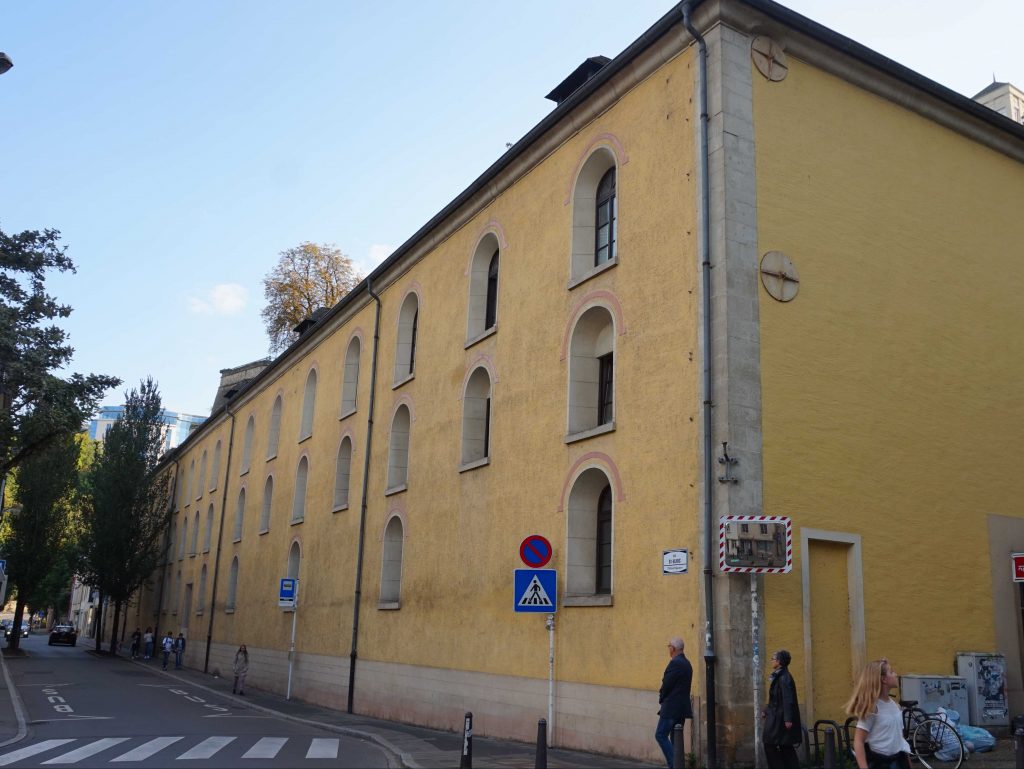The incarceration of ”lunatics” and ”idiots” in the 19th century

The history of the incarceration of “lunatics” and “idiots” in the prisons of Luxembourg City starts with the arrival of the French Revolution in Luxembourg in 1795 and subsequent penal laws which, in theory, regulated the imprisonment of convicts.
In reality, a lack of appropriate buildings led to the installation of a prison in the secularised abbey of Neimënster in 1797. The abbey was in a bad state, conditions were dire and the prison was overcrowded. Many “lunatics” were kept there due to the prohibition of begging and vagrancy, even though for many, their situation was caused by their physical or mental condition. Those arrested were directly brought to the prison where they lived among “normal” prisoners. What exactly happened to them is unknown.

By 1805, the abbey had become too small and a new prison – today’s Ale Prison – was built in Grund for 120 convicts. But by the time it was finished in 1809, it was already inadequate and the officials had already started to send Luxembourgish prisoners to prisons in Belgium. This included the “crazy” inmates, who were deported to ordinary prisons or asylums abroad.
After 1815 with the transition to Dutch rule, the situation worsened in Luxembourgish prisons due to the abolishment and replacement of French insufficient administrations. Nonetheless, the situation for “lunatics” started to change due to criticism of the law allowing their incarceration and of their treatment, which was seen as extermination. This led to demand for the creation of an appropriate asylum. However, legally, “lunatics” were still considered criminals and not ill people, and so families hid their “crazy” relatives from the state’s prosecution.

As of 1840, Luxembourg could govern itself and create its own administrations and penal system. The situation in local prisons was disastrous: in 1830, Luxembourgish prisoners in Belgium had returned to Luxembourgish prisons, which were subsequently permanently overcrowded (1840-41, 2978 men and women went through the Luxembourgish prisons). “Lunatics” were still kept in local prisons at this time but also in foreign asylums.
However, a new approach developed which attributed the problems of these people to their minds rather than their bodies. To rectify the “criminal” minds of the prisoners, solitary confinement was introduced in Luxembourgish prisons. In response, reforms were introduced: the creation of the women’s cellular prison in the former Hospice St. Jean (1851), the asylum in Ettelbruck (1855)- to which “lunatic” prisoners would later be sent- and the men’s cellular prison in the abbey of Neimënster (1869).

Solitary confinement drove prisoners “mad” and started producing its own “lunatics” in Grund prisons. Therefore, a regulation was introduced in 1873 to standardise the procedure of transferring “maniacs” from the prison into the asylum. But this procedure could be abused – also by prisoners. German convict Michel Wester was transferred in April 1869 from the Grund prison to the Ettelbruck asylum because he faked his “madness”, with the goal of easily escaping the poorly-secured asylum. The scheme was only noticed by the officials after his flight.
Indeed, flight or death were the only escape options offered to the convicts transferred to the asylum. Many committed suicide or died under miserable conditions.
